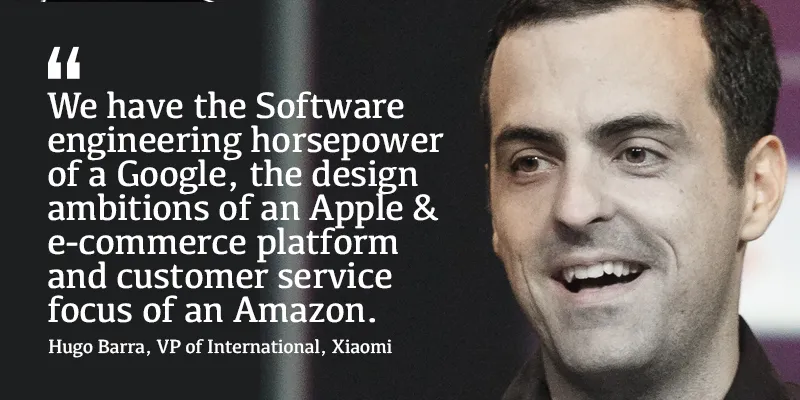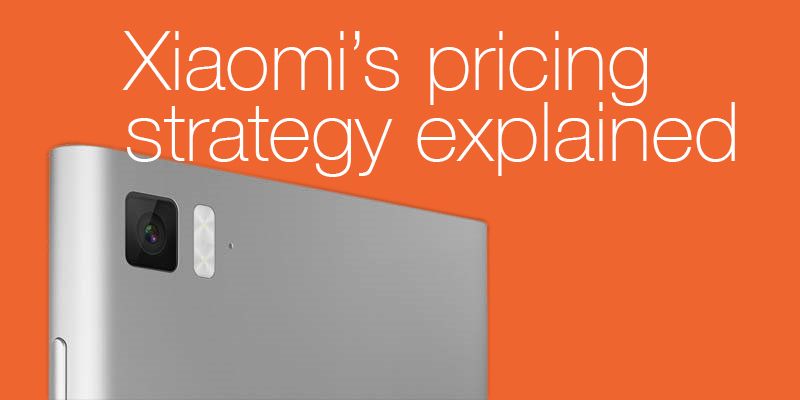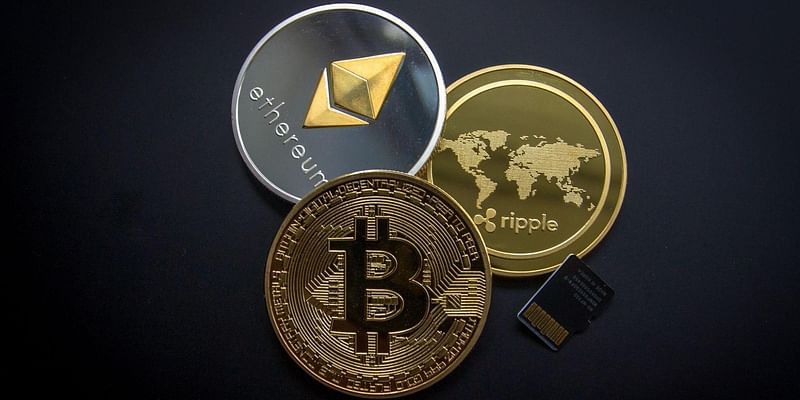How Xiaomi sells its high-end phones at low prices: a short lesson in the Economics of Pricing
On June 6, 2010, eight partners came together to co-found a software startup that would create a new custom ROM based on Android. The startup wanted to create an easy-to-use interface that could provide added functionality to Android. This strong team was led by a CEO who had had successful exits in the past. Lei Jun who founded Joyo.com in 2000, which was later acquired by Amazon in 2004, also held positions at Kingsoft, leading the company to its IPO on the Hong Kong stock exchange.
Jun launched the startup's firmware, called MIUI, in August, 2010 and soon realized that his company had to build hardware to go with the MIUI experience. The first handset was launched in August next year - the Mi One, a top spec phone with a great price way ahead of its time. Since then a lot many things have changed for Xiaomi. For one, the 4-year-old 'startup' has beaten Samsung to become the largest smartphone maker in the largest handset market of the world – China.
In the second quarter of 2014, Xiaomi shipped more than 15 million of its devices, compared to 13.2 million of Samsung. The firm that terms itself a 'mobile internet company' rather than a 'handset manufacturer', shipped 18.7 million devices in 2013 and is already on its way to an ambitious target of 60 million devices this year. Within four years of its inception, Xiaomi has gone from being a startup to a $10 billion upstart and has every smartphone-maker in its cross-hairs, as it keeps undercutting on price and sells high-end specs at low prices.

Read Part 1 of this interview: What India taught Xiaomi: On Flipkart, lessons and future plans with Hugo Barra, VP Global
But how does Xiaomi do it? Is it losing money on every device it sells? Or does it have an innovative strategy of its own?
The pricing conundrum and a wee bit of Economics
Pricing is probably one of the most difficult parameters to optimize, for any company. It'd seem simple enough - just sell the product for more than what it costs. But price is determined by several other factors like branding, positioning, marketing, and many times more important than most - psychology.
For example, if you want to price your products at a premium (think Apple), the product needs to have a unique positioning, in terms of USP of the product or a never-before-seen innovation. You can then employ the WTMWB pricing strategy - What The Market Will Bear, and try to sell at premium prices as fast as possible before the competition gets on to your USP and tries to undercut you. This strategy works best with 'Early Adopters' as these are the set of people who are not very price-sensitive and look to get their hands on new, innovative technologies.
The GPMT strategy in pricing
GPMT or Gross Profit Margin Target is what the companies usually look at when trying to set prices. In simple terms, it is the gross profit margin that they need to pay back their expenses and generate positive net income and cash flow.
Mathematically, GPMT = (Price of the product - Cost of the goods and services being sold) / Price of the product
In a typical manufacturer-distributor-retailer model, the manufacturer aims for a GPMT of 50%, that is it wants to sell the product at twice the cost price. The latter two look at a GPM of 10-15% and 30-50% respectively.
By now it should be easy to understand that when you are buying a product, you are paying not just for the cost of the material, manpower etc involved in it, but also for the profit margin (quite obvious) and the costs incurred in marketing, brand positioning and advertising.
A typical smartphone maker puts its products on shelves of thousands of its retail stores across geographies which incur staff, real-estate and maintenance costs. This, of course, on top of the extravagant spending that goes into grabbing the eyeballs of customers, advertisements - print, digital, banners, hoardings, TV ads etc.
Now imagine a manufacturer that takes several parts out of the above equation, doesn't believe in traditional advertising, shuns the concept of retail stores and chains and decides to do all its selling online. Don't you see how that would lead to a significant amount of reduction in the 'Cost price'? Well, among several other things, this is exactly what Xiaomi does.

The Pricing strategy employed by Xiaomi
To start off with, Xiaomi sells its products online only, through ecommerce. This ensures that it doesn't have to worry about the costs of warehousing and distribution.
"We are an e-commerce company. We live on the internet. We are selling exclusively through e-commerce. And the price there can be much lower, because the price on e-commerce is essentially fulfillment and shipping cost," explains Hugo Barra, VP Global, Xiaomi while exclusively speaking with YourStory.
Xiaomi also shuns traditional models of advertising and depends solely on Social Media marketing and word-of-mouth.
We don't invest in traditional marketing. We live on the social media which is a lot less expensive to us.
Apart from this, Xiaomi cuts cost at every stage. It sources components itself and deals with these sellers with a different strategy. Xiaomi also bets on 'Moore's Law'. Unlike other bigger players who discontinue their models after 6-8 months in the market, Xiaomi sells it products for upto 18-20 months after launch. This means that, in accordance with Moore, the price of the individual components go down while the price of the phone remains constant throughout.
But the most important thing to note is that Xiaomi is a 'mobile internet company'. It is looking to make money, not on its hardware, but by selling apps, games and special Android themes and Internet services on top of its custom MIUI - a pricing strategy very well-adopted by the e-commerce behemoth Amazon.
In the past too, many Chinese handset players have entered the market with low-priced phones. But with low prices, tagged along the low quality as well, giving the Chinese market a bad name. Xiaomi and Barra set the tone right by bringing high-end quality at affordable prices.
On the Chinese market and being called the 'Apple of China'
Xiaomi has been time and again called the 'Apple of China'. The fact that Lei Jun launches the phone in typical Steve Jobs-esque manner and attire doesn't help their cause. But ask anyone from the Xiaomi team on their comparison with Apple and they will start off with their admiration for the Cupertino-based phone maker.
"Apple is one of the most extraordinary companies that the world has ever seen, and will continue to be for a long time. On that account one would say that being compared to Apple is a great thing," Barra starts off.
Barra goes on to differentiate Xiaomi, though.
The reality is that we are a lot more and a different kind of company. You could say that Xiaomi is like bits and pieces of Google, and Apple, and Amazon. We have the Software engineering horsepower of a Google, the design ambitions of an Apple and the e-commerce platform and customer service focus of an Amazon.
Barra believes that the smartphone industry from China has already left a significant legacy over the last couple of years. Talking about products from China, Barra mentions Oppo, OnePlusOne and Huawei who have come out with world-class products.
"Looking at these products no one can say that they are less interesting or less appealing than products coming out of Korea, Japan or the US," he summarizes.
'Apple of China' or not, one thing is for sure that Xiaomi has made significant strides into whichever market it has entered, in a relatively short period of just four years.
This article is Part-2 of the YourStory exclusive interview with Hugo Barra, Global VP, Xiaomi. In case you missed it, here is Part 1 of this interview where Barra talks about his lessons from India and Mi's future plans for India.
In the 3rd part of the interview, we speak to Hugo Barra about the MIUI and the privacy issues.









![[Exclusive] Vauld to seek 3-month moratorium extension as creditors panel explores bailout options](https://images.yourstory.com/cs/2/a09f22505c6411ea9c48a10bad99c62f/VauldStoryCover-01-1667408888809.jpg)

